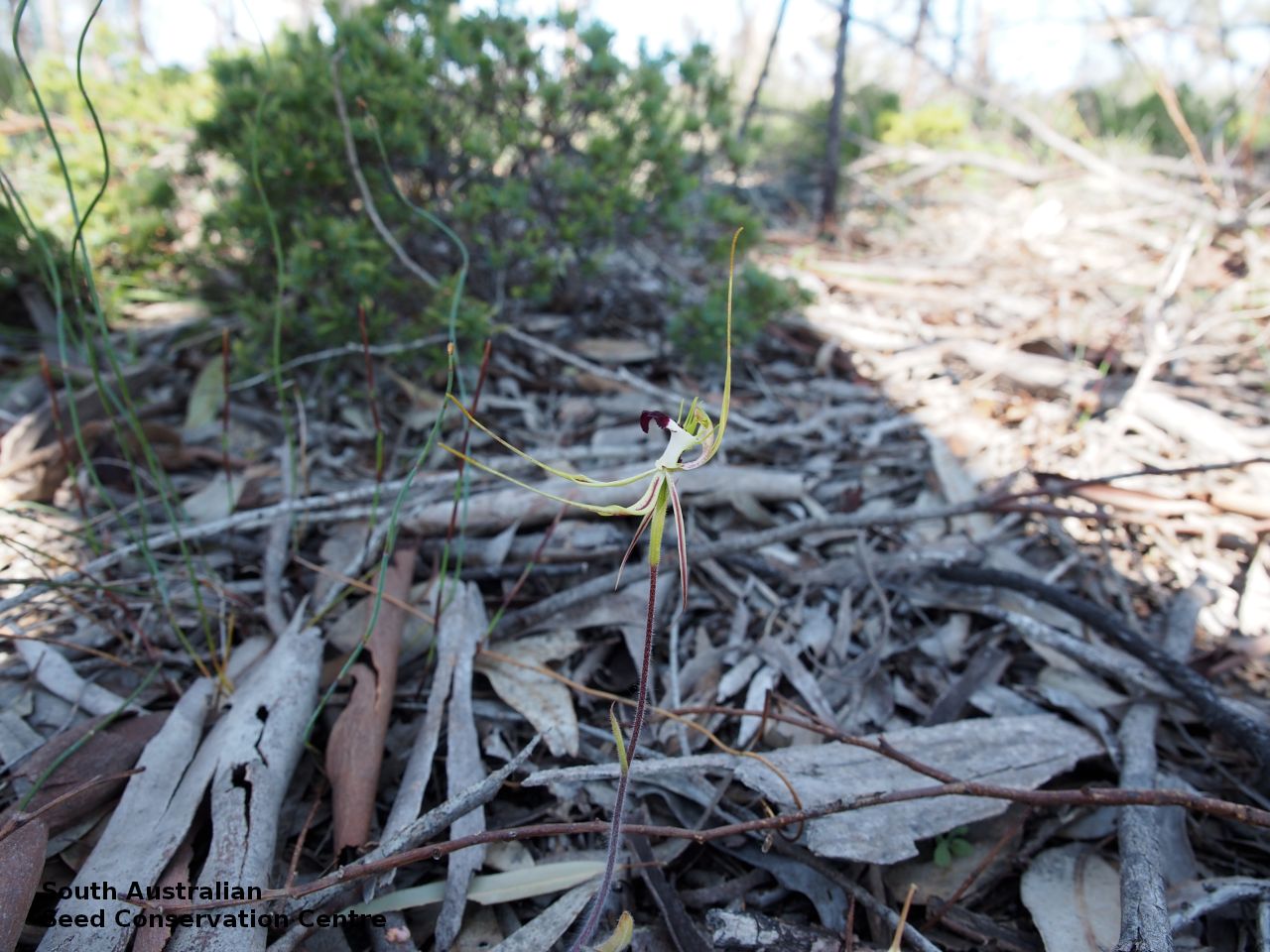
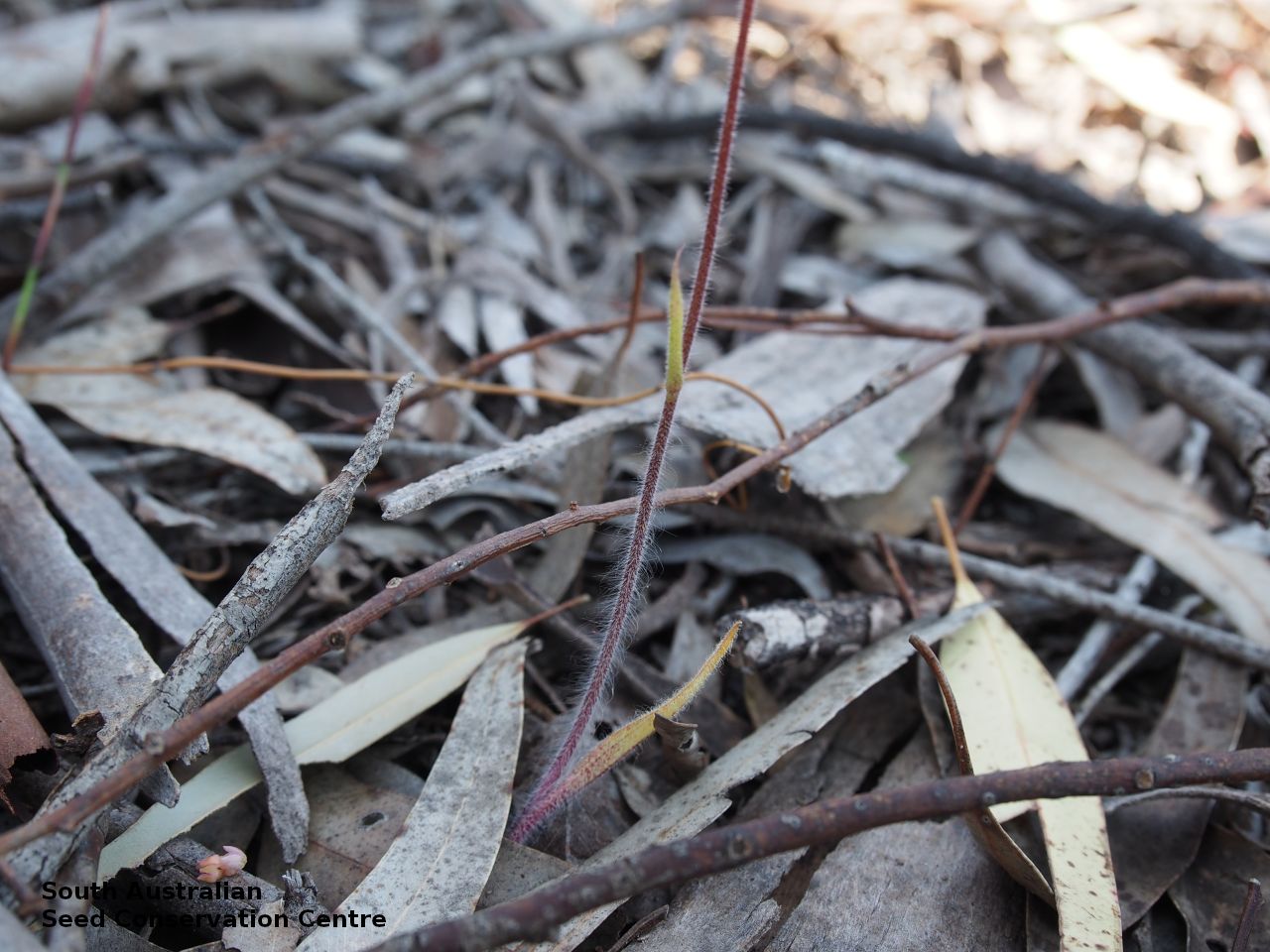
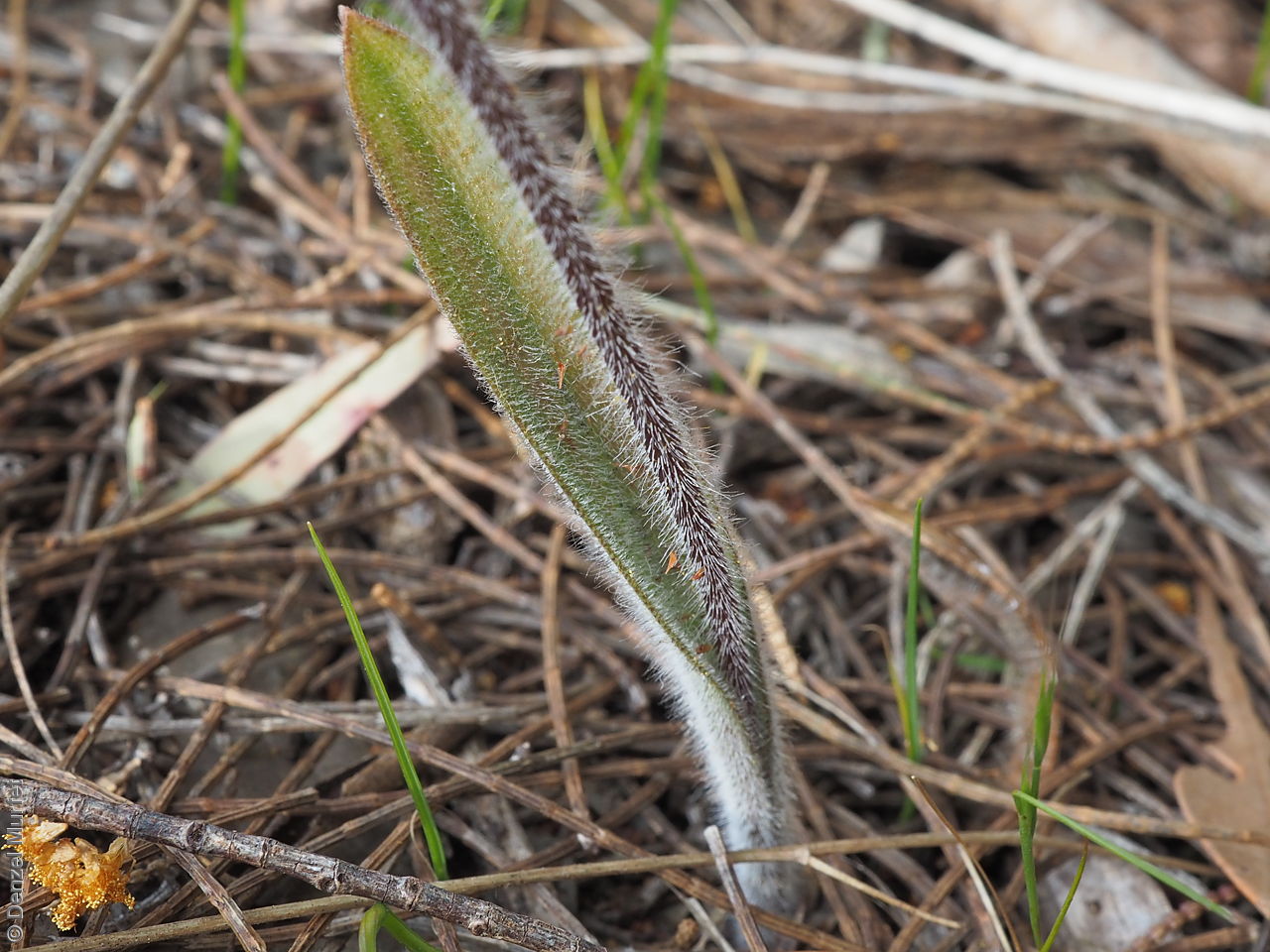
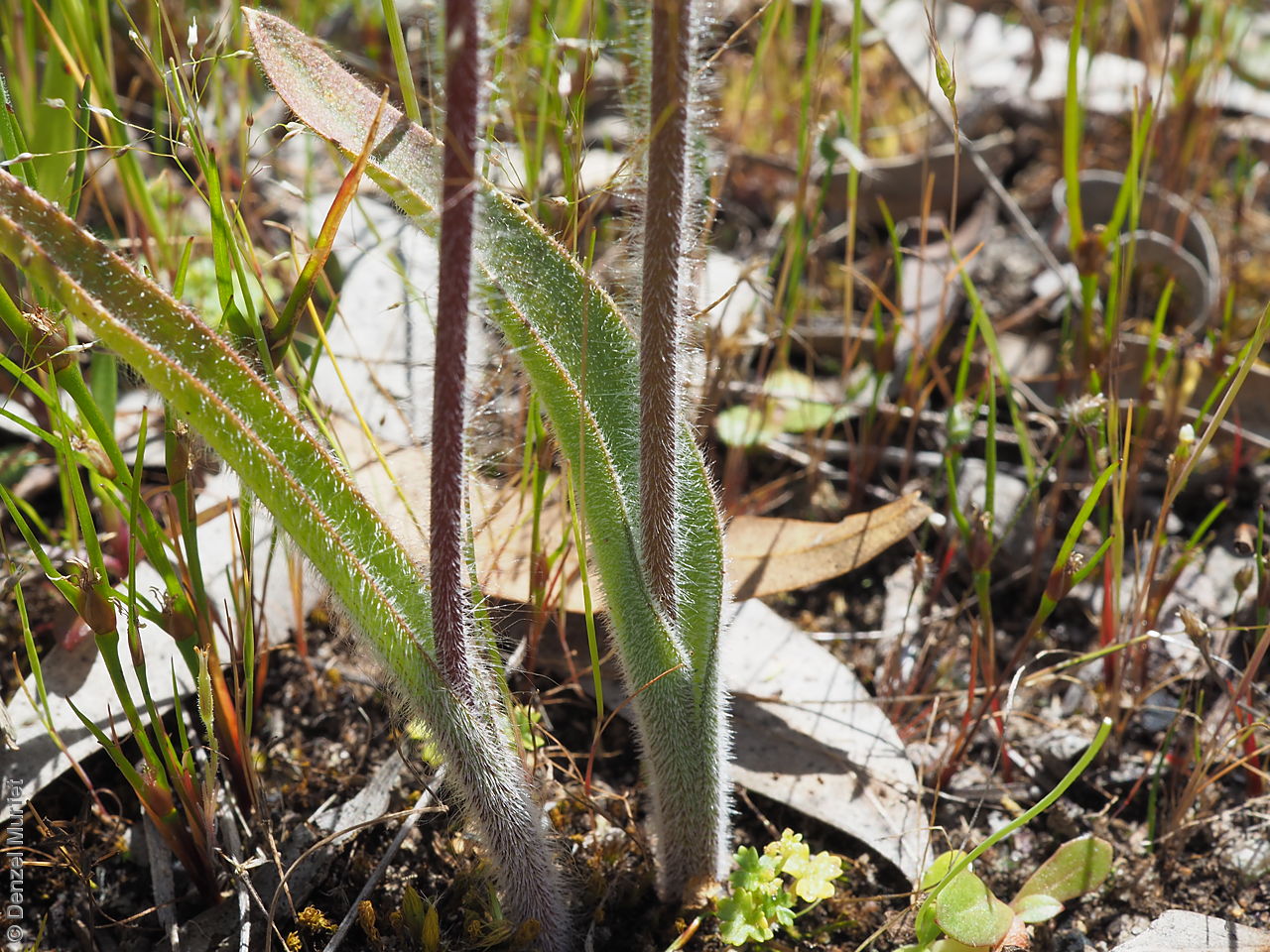
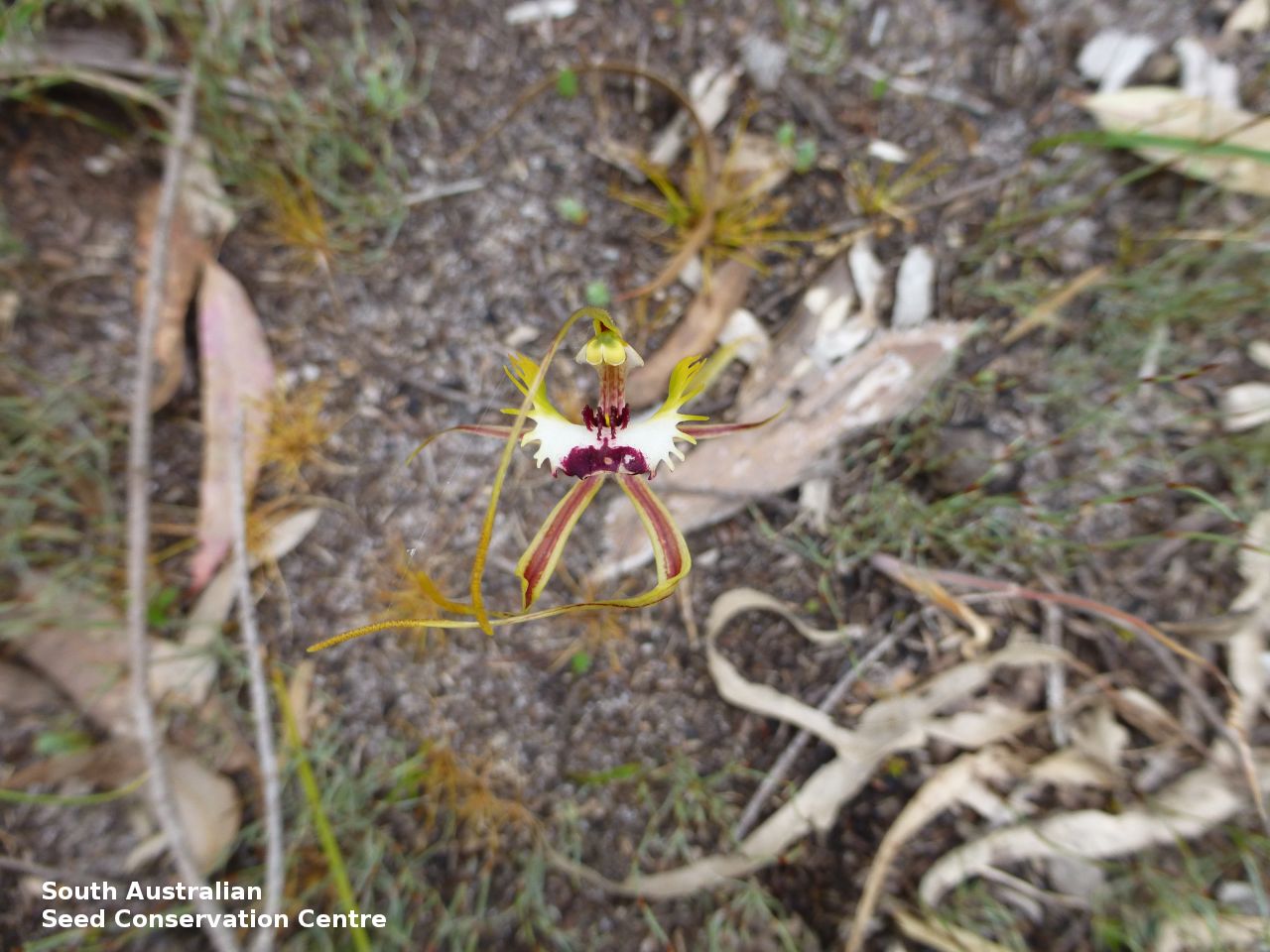
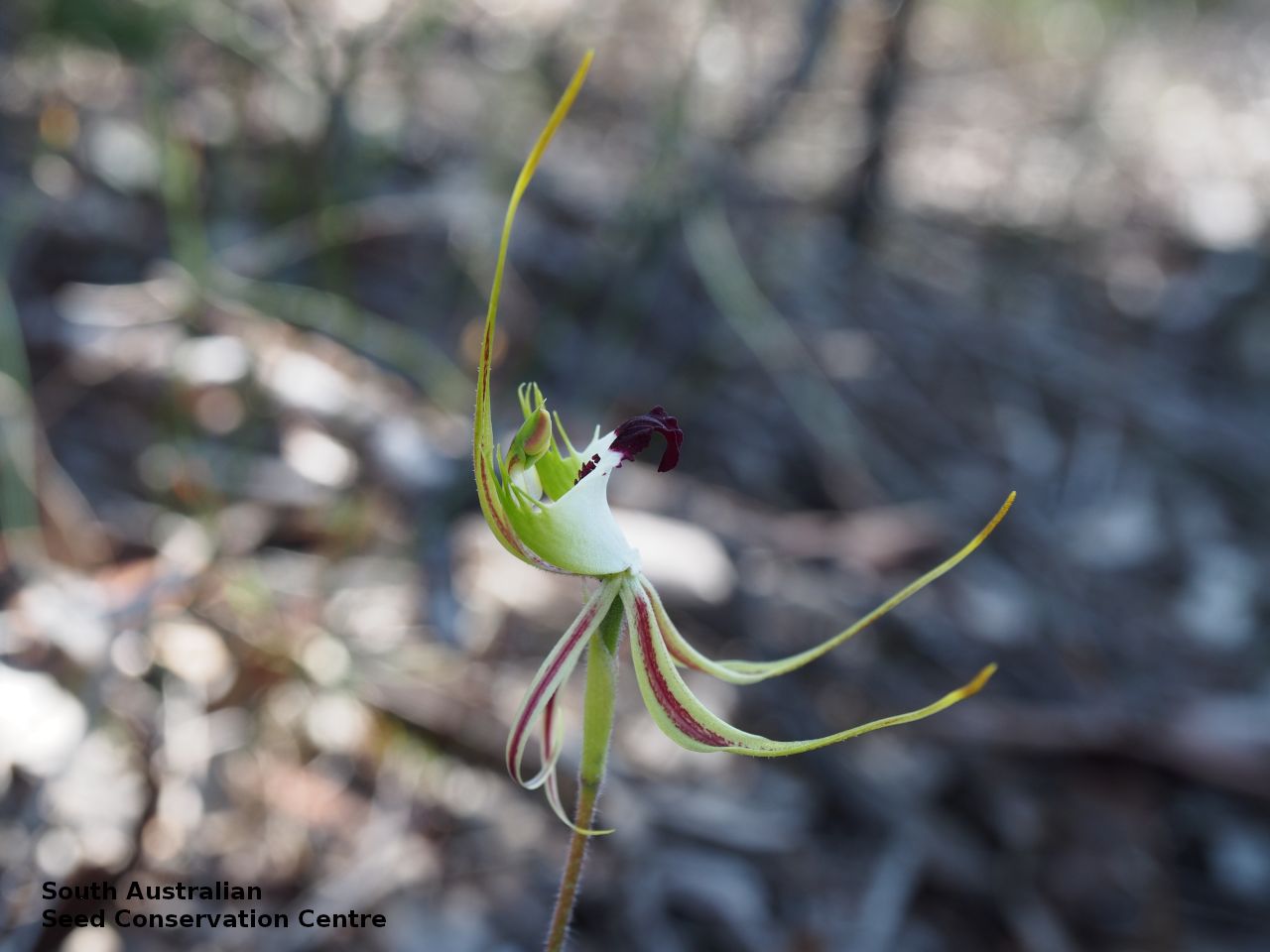
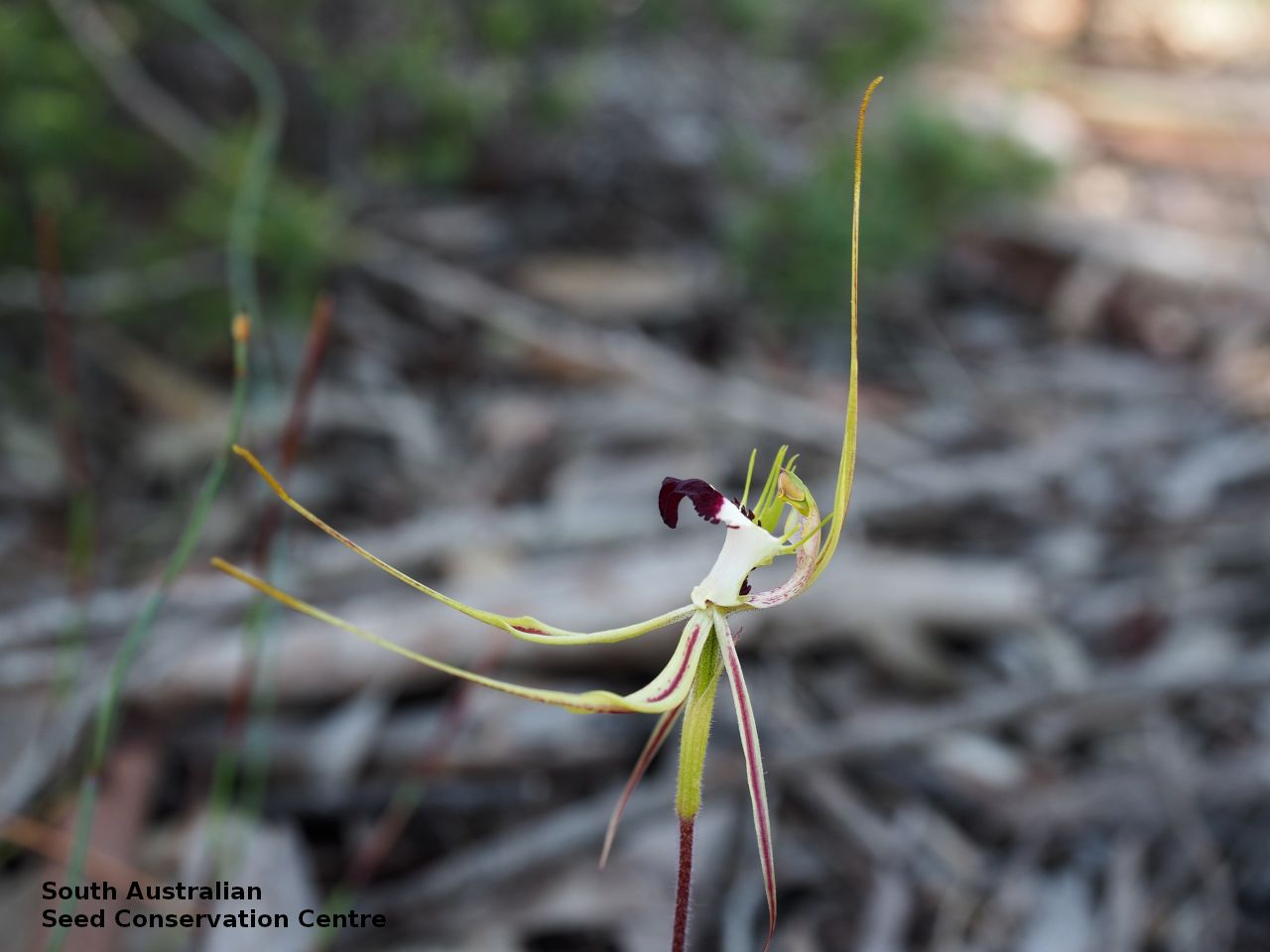

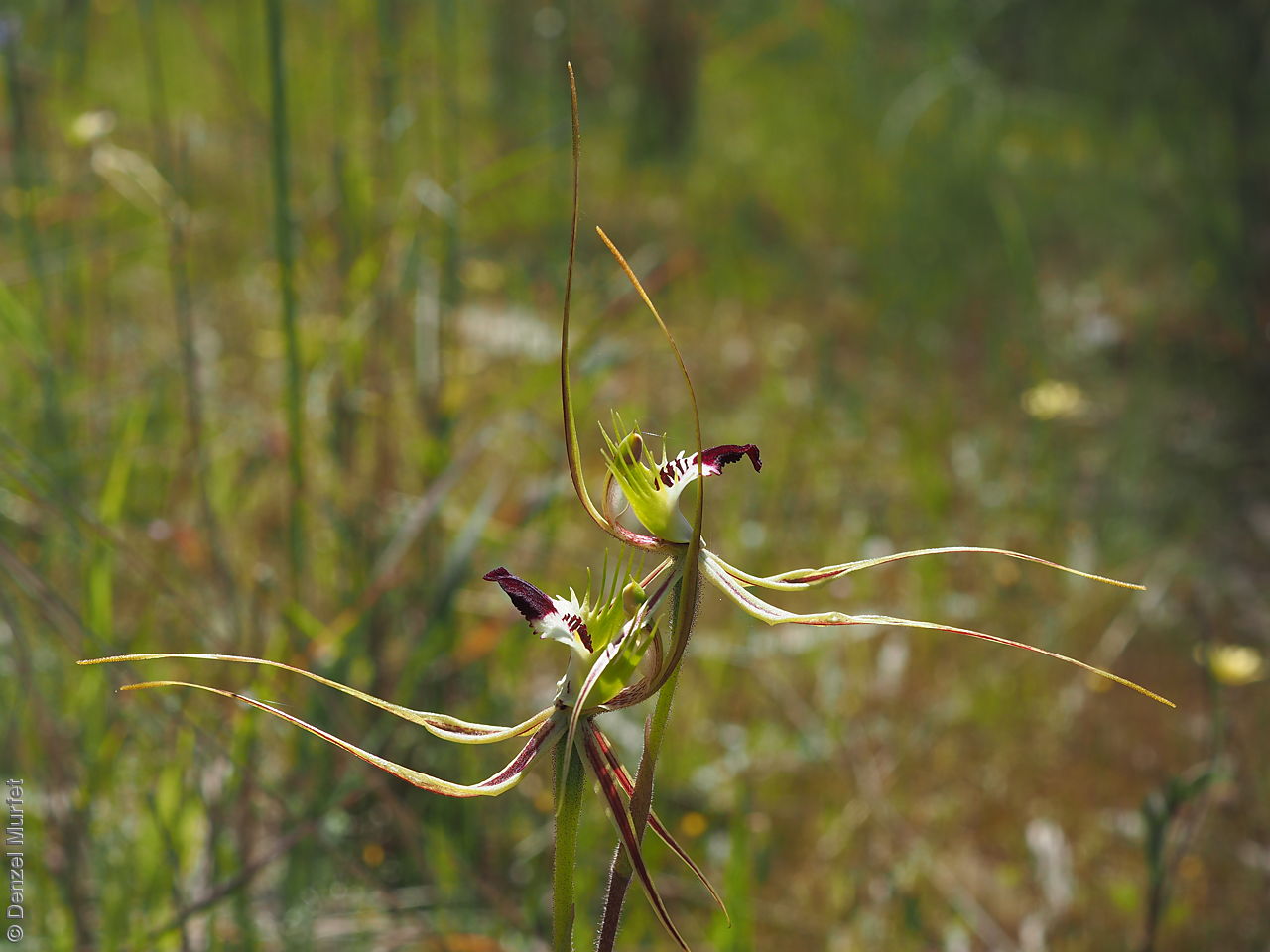

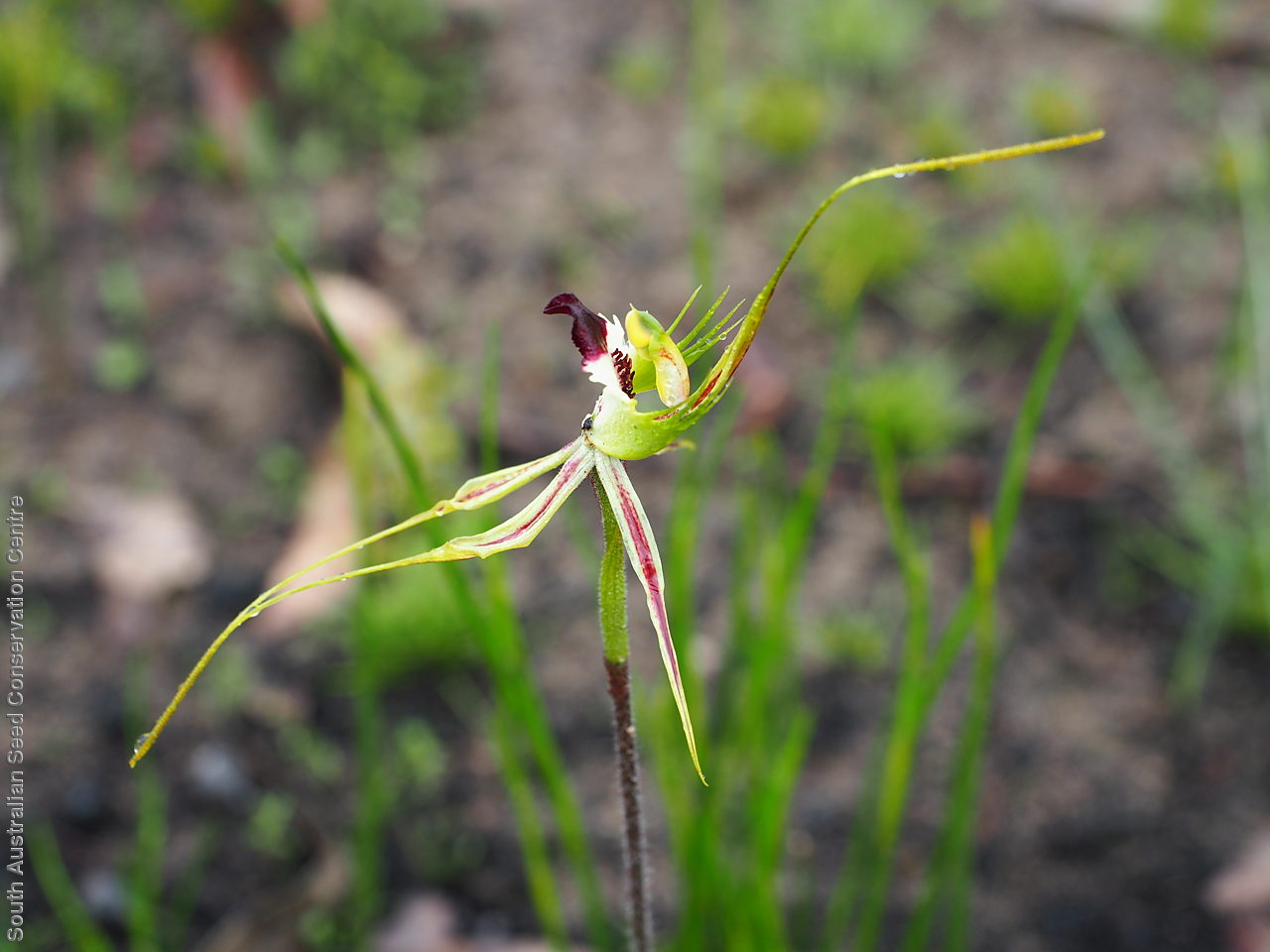

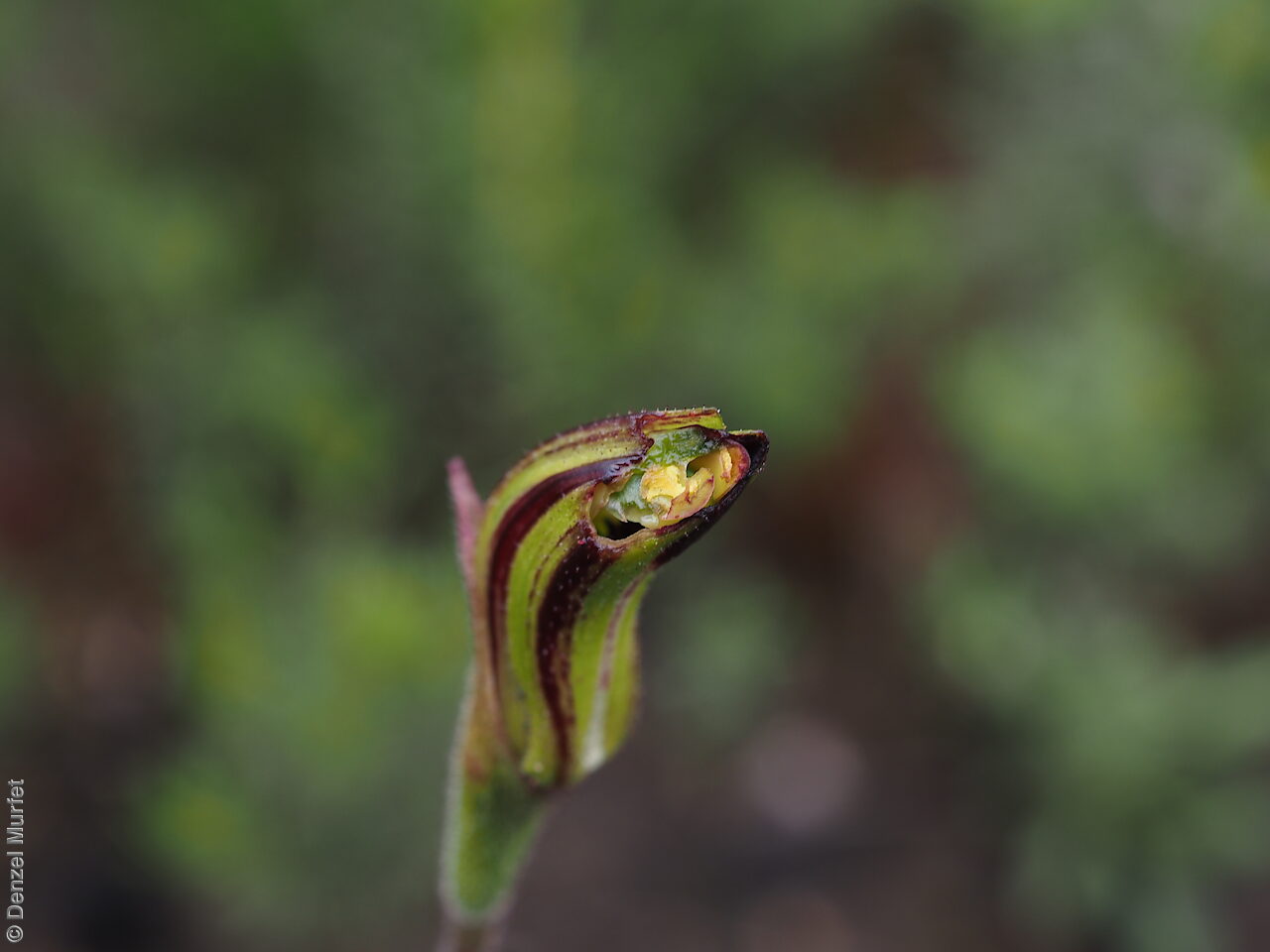
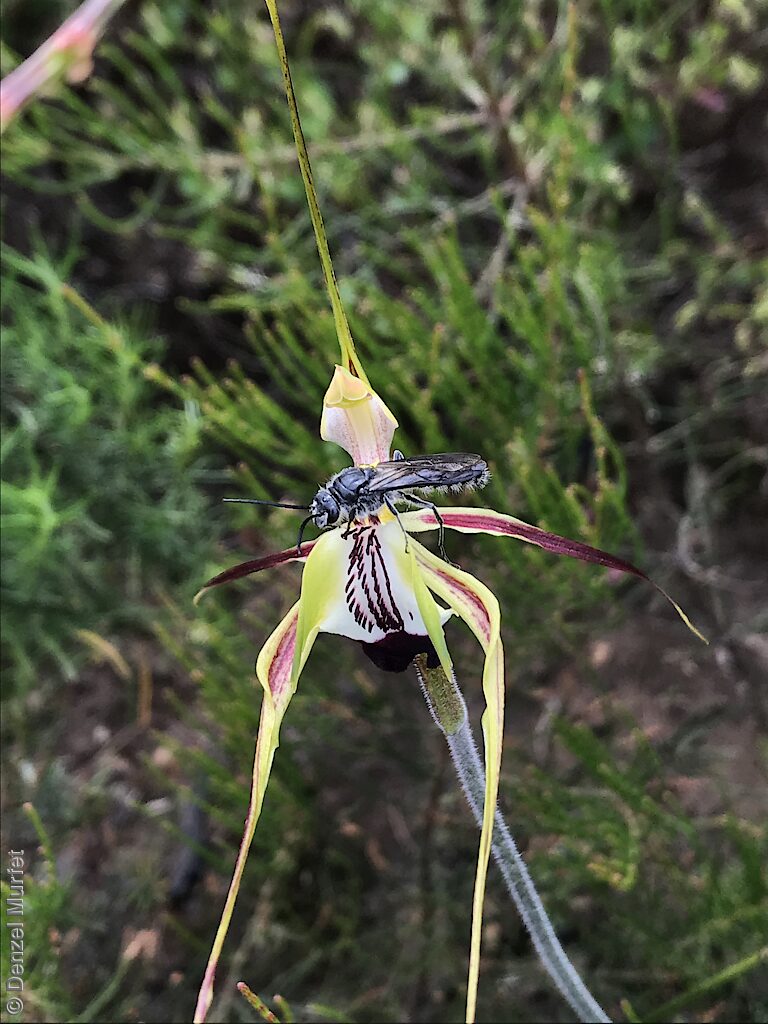
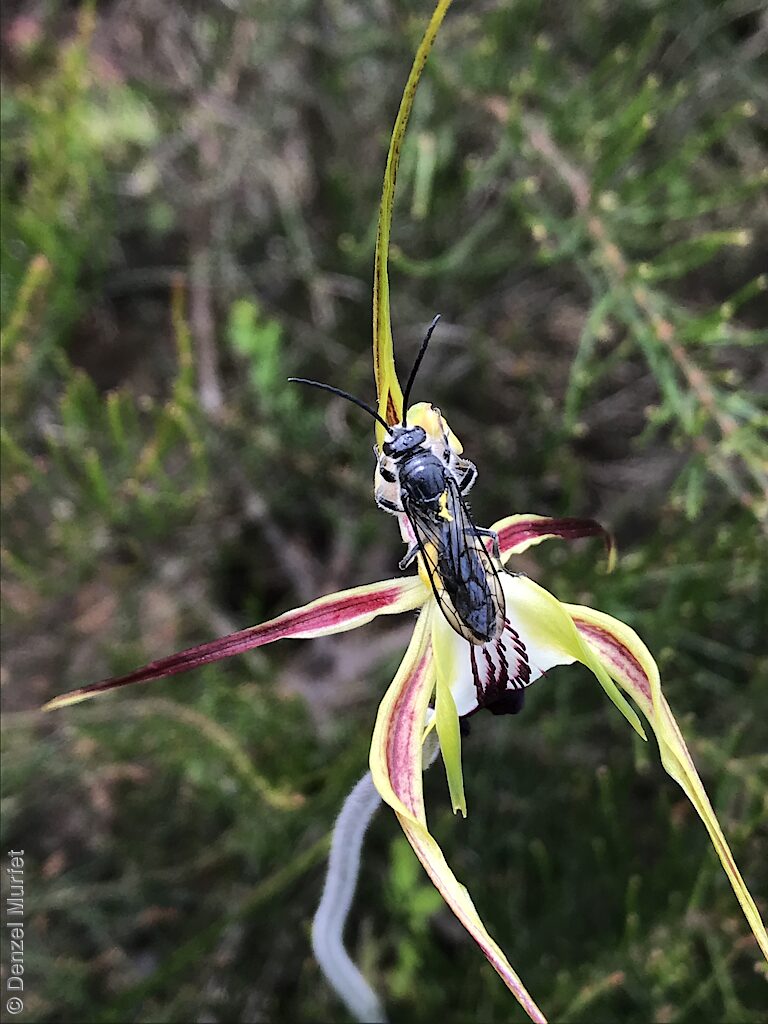
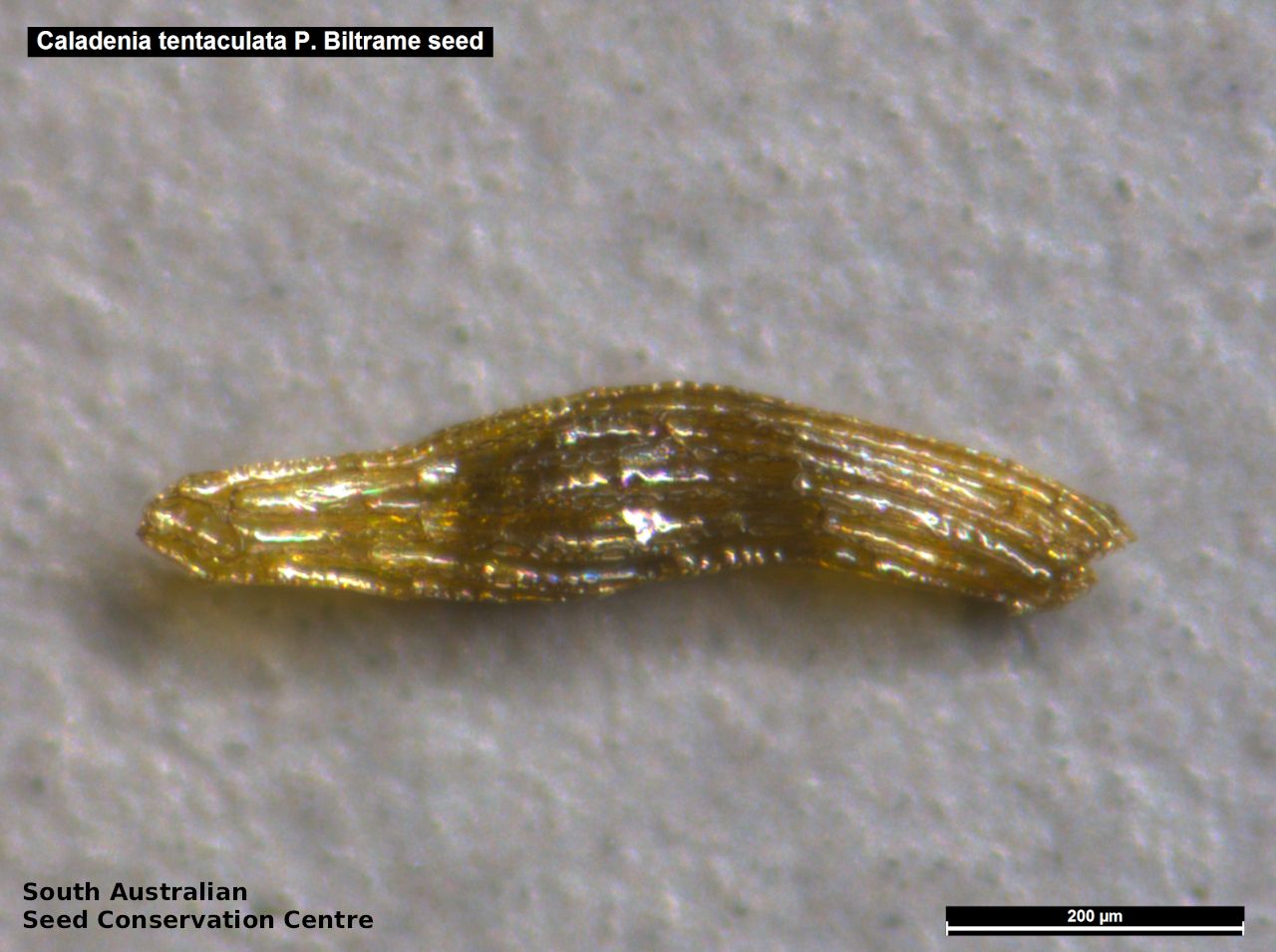
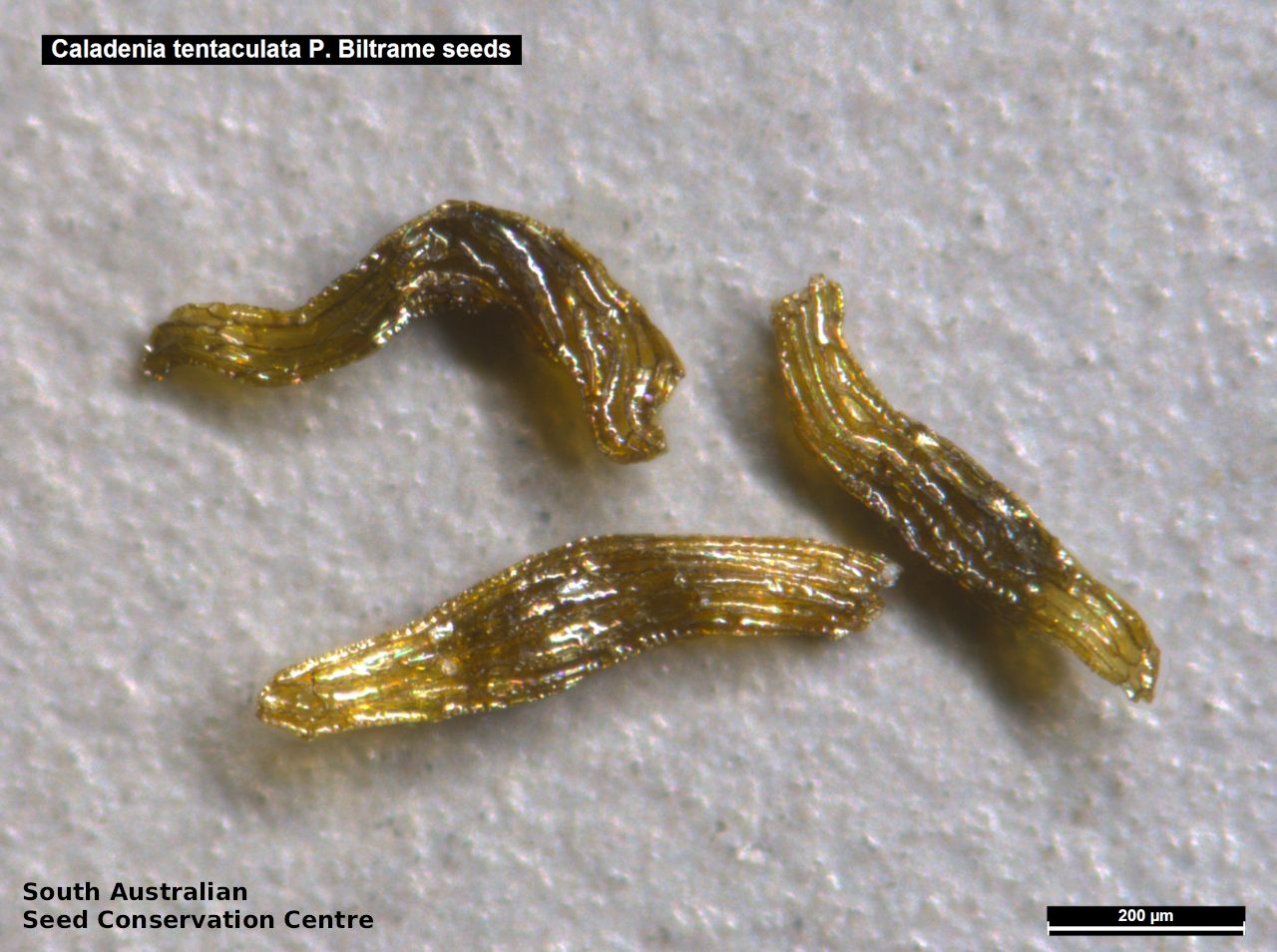
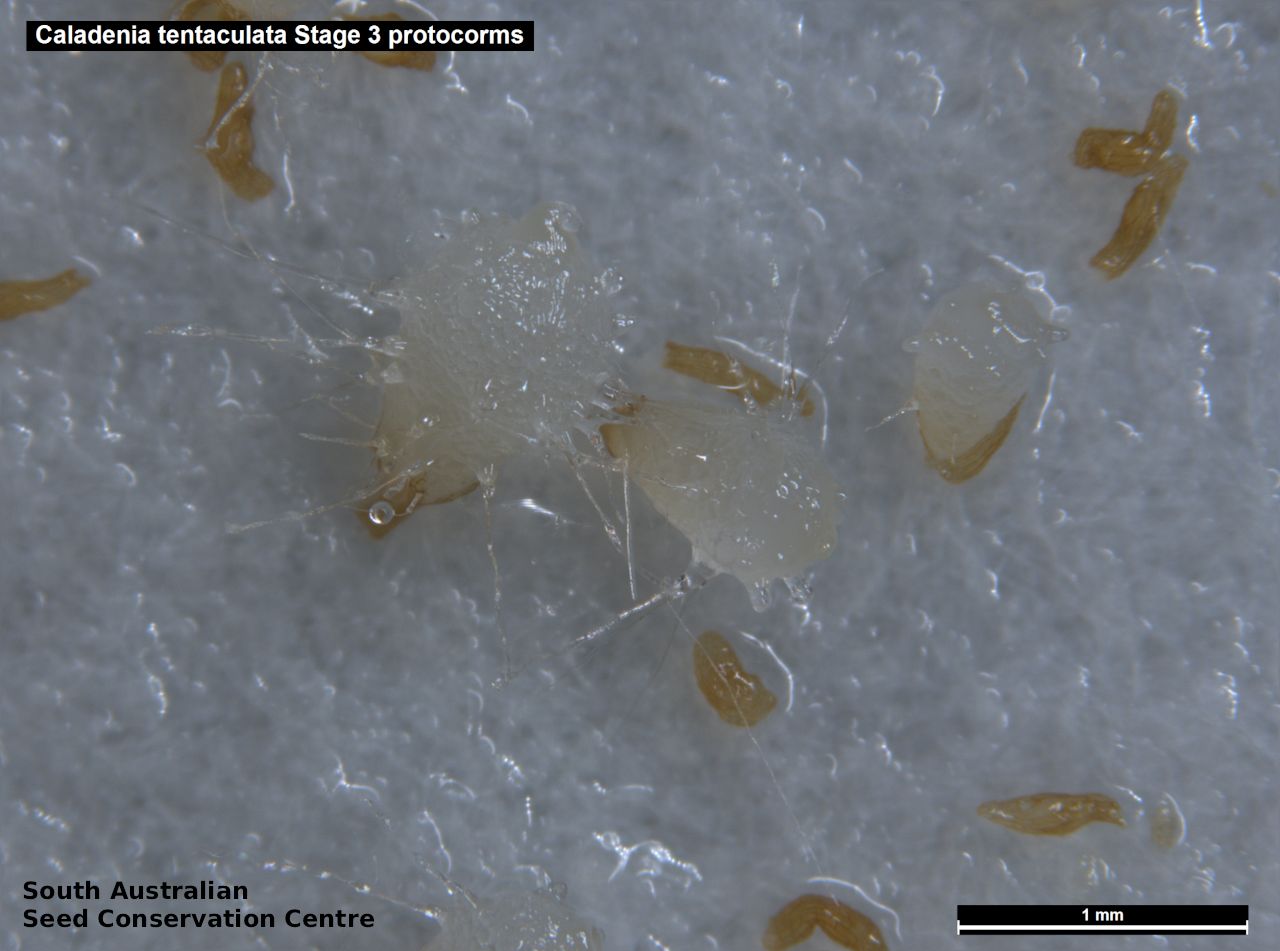

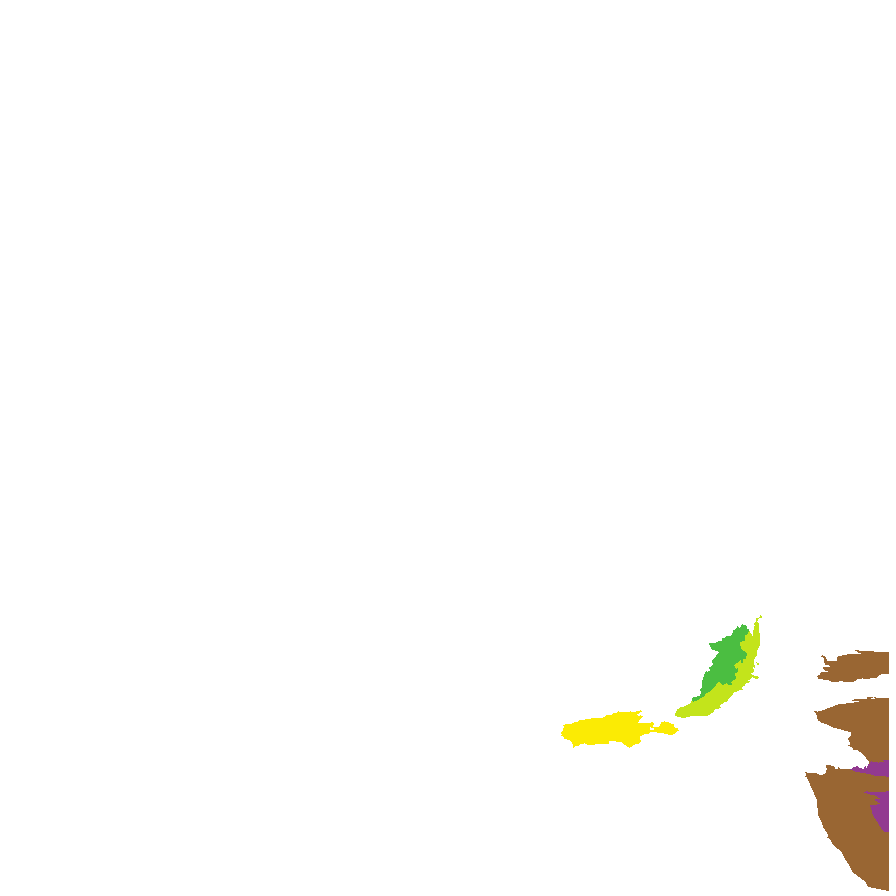
Botanical art
Prior names
Calonemorchis tentaculata
Arachnorchis tentaculata
Calonema tentaculatum
Common names
Large Green-comb Spider-orchid
King Spider-orchid
Etymology
Caladenia from the Greek 'kallos' meaning beauty and 'aden' meaning a gland, referring to the colourful labellum and the glistening glands at the base of the column that are present in many of the species. Tentaculata from Latin meaning a feeler or holdfast, referring long tentacle-like sepals.
Distribution and status
Found in the Mount Lofty Ranges, Kangaroo Island and the South-east in South Australia, growing in a range of habitats including coastal heathland, dry inland heathy or grassy woodland or open forest, on well-drained soils. Also found in New South Wales and Victoria. Native. Common in South Australia. Common in the other states.
Herbarium regions: Northern Lofty, Murray, Southern Lofty, Kangaroo Island, South Eastern, Green Adelaide
AVH map: SA distribution map (external link)
Plant description
Large terrestrial orchid with a flowering stem to 50 cm high. Leaf single, to 15 cm long and 2 cm wide, hairy, often with red spots near the base. Flowers up to three, green with red stripes, to 10 cm across borne on a spike 50 mm tall. Sepals brown or yellow, club-like glandular tips, to 12 mm long. Dorsal sepal curves forward, to 80 mm long and 4 mm wide. Lateral sepals to 80 mm long and 5 mm wide and are turned downward, nearly parallel to each other but with the tips turning to horizontal or slightly upwards, then often drooping at their ends. Petals to 50 mm long and 3 mm wide and turned downwards. Labellum green with a white central area and a dark red tip, to 20 mm long and 25 mm wide, margins with 5-8 thin green teeth curved downwards at the tips. Labellum with four crowded rows of dark red, club-shaped calli in the centre. Flowering occurs from September to December. Fruits are pale-brown hairy, papery ellipsoid capsule containing numerous tiny seeds.
Seed collection and propagation
Collect seeds between October and January. Collect fat capsules as they start to dry and turn brown. Pods will split and release the seeds quickly and will require monitoring. To increase the chances of collecting mature pods, it is recommended that a small breathable bag (ie. Organza bags) be used to enclose the developing capsules. Place the capsules in a container that will hold fine seeds and leave to dry for a few weeks or until the capsule split. Then carefully hold the capsule and tap it gently to release the seeds. Store the seeds with a desiccant such as dried silica beads or dry rice, in an air tight container in a cool and dry place, refrigerator or in liquid nitrogen.
| Location | No. of seeds (weight grams) | Number of plants | Date collected | Collection number Collection location | Date stored | % Viability | Storage temperature |
|---|---|---|---|---|---|---|---|
| BGA | 2,545,500 (0.91 g) | 85 | 30-Oct-2018 | Wadmore Park Southern Lofty | 24-Apr-2019 | N/C | -18°C, -80°C |
| BGA | 476,000 (0.17 g) | 12 | 9-Nov-2019 | P.Beltrame Southern Lofty | 24-Jun-2020 | N/C | -18°C |
| BGA | 1,283,200 (0.458 g) | 34 | 21-Oct-2021 | Wadmore Park Nursery Southern Lofty | 10-Aug-2022 | N/C | -18°C, -80°C |
| BGA | 1,200,000 (0.44 g) | 1-Dec-2017 | P. Biltrame Southern Lofty | 10-Aug-2022 | N/C | -18°C, -80°C | |
| BGA | 1,625,600 (0.580 g) | 41 | 24-Nov-2022 | Wadmore Park Southern Lofty | 21-Jun-2023 | N/C | -18°C, -80°C |
Number of plants: This is the number of plants from which the seeds were collected.
Collection location: The Herbarium of South Australia's region name.
% Viability: Percentage of filled healthy seeds determined by a cut test or x-ray.